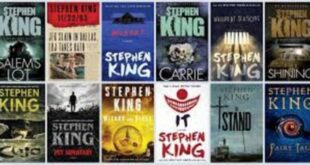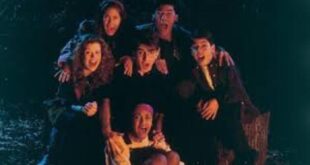The most effective and enduring horror movies are the ones that target and exacerbate deep-seeded human fears and anxieties. Genre filmmakers have become increasingly proficient at probing the darkest recesses of the psyche and manipulating our emotions. Whether you watch scary movies to overcome your fears (“What doesn’t kill me makes me stronger!”), or to stir the pot (“Because being terrified is fun!”), here’s a guide of what to seek out and what to avoid, as you see fit!

Acarophobia/Entomophobia/Insectophobia: First on the list is the fear of spiders and insects—basically anything that’s creepy and crawly. To stoke this phobia, I’d check out films like: 1990’s Arachnophobia (obviously!), Stung (2015), Mimic (1997), Starship Troopers (1997), Big Ass Spider (2013), Eight Legged Freaks (2002), and Lavalantula (2015).
Achluophobia/Myctophobia/Noctiphobia: One of the most universal human anxieties is fear of the dark and/or nighttime. The best movies to watch with the lights off, in my opinion, include: Darkness Falls (2013), Lights Out (short), and 30 Days of Night (2007). Nyctohylophobia refers specifically to fear of dark wooded areas or of forests at night. There’s an entire cabin-in-the-woods subgenre to choose from, but you can’t go wrong with the Evil Dead franchise.
Agateophobia/Dementophobia/Maniaphobia: Next on the docket is fear of insanity and/or insane people. The only thing more terrifying that being misdiagnosed as crazy is actually losing one’s mind. Push your sanity to the limits with some of my favorites, like: Stonehearst Asylum (2014), Gothika (2003), The Ward (2010), and Asylum Blackout (2011). Fear of losing one’s mind or being driven insane is a common element in Gothic film and literature.

Agliophobia: We’re talking about fear of pain, plain and simple. Unless you’re a masochist, chances are pain is something you avoid at all costs. To face it head on, torment yourself with movies like: Hellraiser (1987), Martyrs (2008), or Wolf Creek (2005) for starters. Anything in the torture porn subgenre of horror will rub salt in this particular wound; you can’t go wrong with the Hostel and Saw franchises.
Automatonophobia: “The Uncanny Valley” is an aesthetic hypothesis that purports: “When features look and move almost, but not exactly, like natural beings, it causes a response of revulsion among some observers.” It’s a term used to describe negative reactions to dolls, ventriloquist’s dummies, mannequins and automatons. Freak out your favorite automatonophobic with films like: The Boy (2016), Annabelle (2014), Dead Silence (2007), or anything in the Child’s Play franchise.
Bacteriophobia/Panthophobia: For those of us who came of age in the shadow of the AIDS epidemic, fear of virus, bacteria, and diseases is deeply engrained. These anxieties were heightened by perceived threats of biological warfare in the early 21st Century and, more recently, with the Ebola outbreak in East Africa. Fear of disease also goes hand-in-hand with body horror, a subgenre that focus on the deterioration of the human body. To scratch this itch, I’d recommend: Cabin Fever (2002), Carriers (2009), Flu (2013), and Contracted (2013).

Bogyphobia: I bet you didn’t know there’s a word for “Fear of Boogeymen”! As opposed to serial killers and random psychopaths, Boogeymen come with founding mythologies and potentially supernatural abilities. You know who I’m talking about: Jason Voorhees, Michael Myers, Victor Crowley, Leslie Vernon, Freddy Krueger, Candyman and many more. Krampus, who surged in popularity last year, is a seasonal sort of Boogeyman. There’s even a film called Boogeyman, released in 2005, that’s pretty damn good!
Claustrophobia: If you’re not one of the millions of people who suffer from some degree of claustrophobia, fear of confined spaces, these movies might just change that: The Descent (2005), Crawl or Die (2014), As Above, So Below (2014), Beneath (2013), and Buried (2010). Claustrophobia is often a key element in sci-fi films, as well as many zombie movies where survivors are chased into increasingly tighter confines.
Coulrophobia: We can probably thank Stephen King’s It and Tim Curry’s top notch portrayal of the evil clown Pennywise for creating a generation of coulrophobics. Or maybe it was John Wayne Gacy! Either way, clowns are no longer staples of children’s parties or traveling carnivals like they used to be; now, clowns almost instantly strike terror into even hardened hearts. Besides the aforementioned It (1990), you can look into the grease-painted face of evil incarnate in: Stitches (2012), All Hallow’s Eve (2013), Clown (2014), and Killjoy (2000). Don’t forget to check out Rob Zombie’s 31 dropping later this year.

Necrophobia/Thanatophobia/Thantophobia: Fear of death and dying is probably the single most deeply engrained universal terror, something that binds human being with every other member of the animal kingdom. While fear of death is a pervasive element of most (if not all) horror movies, the Final Destination franchise turned death itself into a super villain. Fear of death also extends into fear of dead things, an anxiety that’s central to the zombie subgenre.
Pedophobia: There’s a reason creepy kids are such a common motif in horror movies: Kids are scary! It’s the idea that an innocent smile can actually mask demonic intensions. Plus, children are often seen as more perceptive of (and susceptible to manipulations from) nefarious supernatural entities. For big thrills in small packages, check out: Children of the Corn (1984), The Children (2008), Wicked Little Things (2006), Dark Touch (2013), and Come Out and Play (2012).
Phagophobia: Whether by zombie or beast or cannibalistic fiend, the idea of being eaten is a common horror trope and a firmly-rooted human fear. Examples include: Jaws (1975), Eaten Alive (1976), Lake Placid (1999), Backcountry (2014), and Attack on Titan (2015). Plus, there’s an entire subgenre dedicated to cannibalism; I recommend sinking your teeth into: The Texas Chainsaw Massacre (1974), Motel Hell (1980), The Green Inferno (2015), and Ravenous (1999).

Phasmophobia/Spectrophobia: Phantoms, ghosts, spooks, and demons have been staples of supernatural horror movies from the get-go. Few things are as innately bone-chilling as the concept of communing with the deceased and other phantasmagoria. For the best otherworldly chills, check out: Poltergeist (1982), Mama (2013), The Others (2001), The Amityville Horror (1979), A Haunting in Connecticut (2009), and the entire Insidious franchise.
Technophobia: Dystopian horror and sci-fi reflects a relatively recent, yet widely pervasive, fear of technology and the inevitable consequences of progress. Epitomized in the Terminator, Matrix, and Resident Evil franchises, it’s also a core concept in films like: The Fly (1986), The Island (2005), Pandorum (2009), Europa Report (2013), and The Last Days on Mars (2013).
Xenophobia: Whether it’s little green men from outer space or the new family down the street, humans are hard-wired to fear strangers. Beyond the innate apprehension associate with those outside our immediate tribe, concepts like invasion and assimilation are intensely ominous. Xenophobia can be found in the subtext of just about every sci-fi and horror film that features aliens. Some of my favorites: The Alien and Predator franchises, The Thing (1982), Extraterrestrial (2014), Signs (2002), and The Faculty (1998).

In the immortal words of Franklin D. Roosevelt: “[The] only thing we have to fear is fear itself.” I wonder if FDR was a horror fan?
If you can’t get enough of me here at Pop Horror, follow me on Twitter @josh_millican for quality horror articles worthy of your attention.
 PopHorror Let's Get Scared
PopHorror Let's Get Scared




